I’ve tested many air purifiers so far, and something interesting caught my eye, which is that many users don’t know the true purpose of pre-filters in one air purifier.
That is why I decided to write an article about preliminary filters, which is the first stage of filtration in most of today’s air purifiers. There are several types of pre-filters. Each manufacturer has its own specific pre-filter. This filter essentially filters almost nothing. Its primary purpose is to protect HEPA filters from rapid contamination and extend the life of HEPA filters.
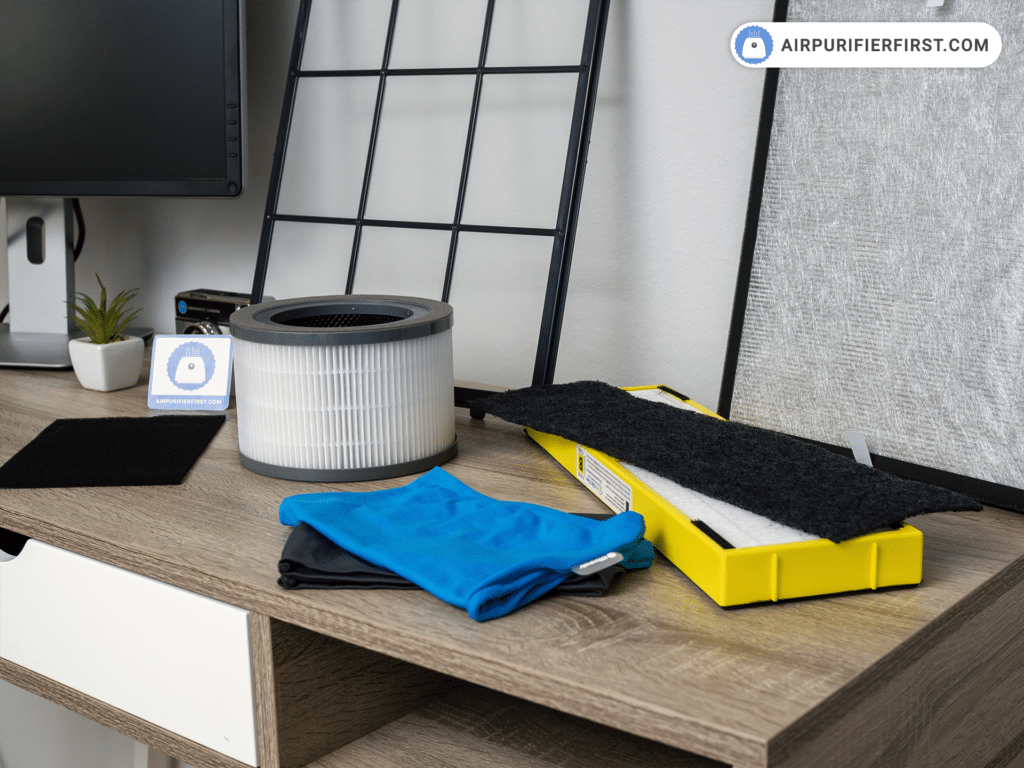
Table of Contents
In the continuation of this informative text, I will describe what pre-filter, pre-filter types, why it is crucial, and how it is cleaned. Almost all the claims I make in this article are the product of personal research and testing of various devices, while I came to some by researching epa.gov pages.
What is a pre-filter in an air purifier?
As I stated at the beginning, the pre-filter is an integral part of almost all air purifiers available on the market today. This is the first stage of filtration, and its purpose is to capture large particles and thus protect and prolong the life of the primary filter, which is most often a HEPA filter.
The pre-filter is extremely useful because it collects pet hair, carpet hair, large dust particles, and other larger particles, thus extending the HEPA filter’s life.
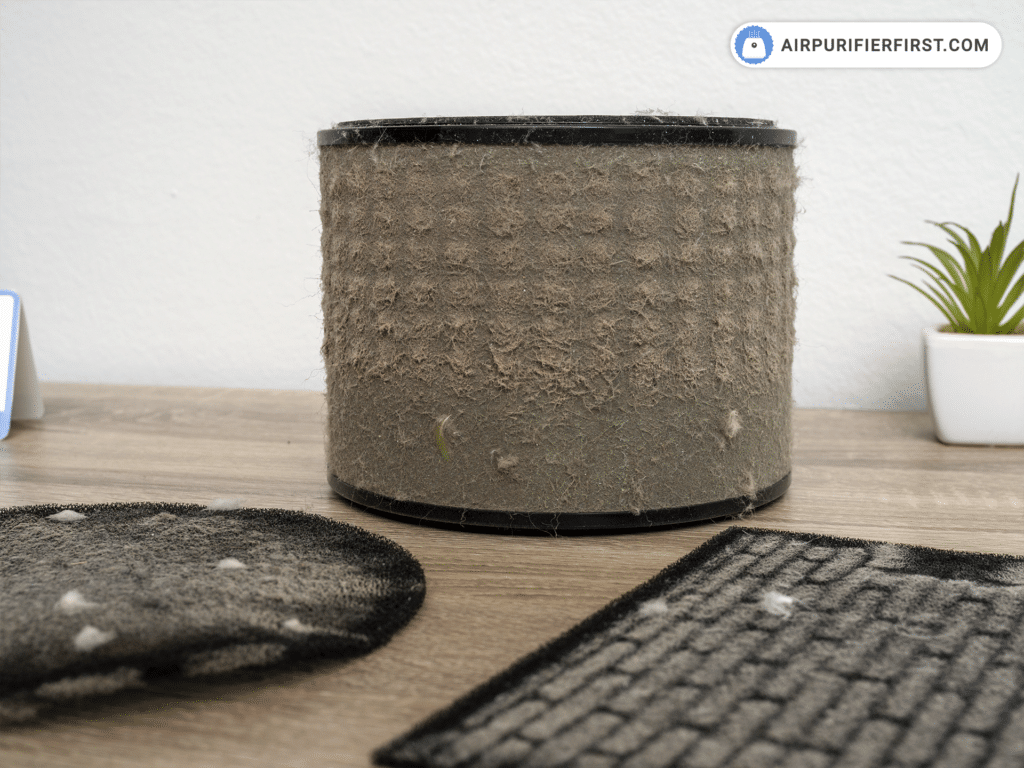
To avoid confusion, HEPA filters can also retain larger particles, but in this way, they get dirty quickly, and then you have to change them often. The pre-filter is easier to clean and maintain, saving you money, so you don’t have to buy replacement HEPA filters often.
Some pre-filters are connected to a HEPA and carbon filter, which is the case with many 3-in-1 filters. Other filters are separate, and they usually require a particular cleaning procedure. Many of them are washable.
The pre-filter is nowhere near as efficient as a HEPA filter. The efficiency of the pre-filter is mostly between 20% – 70%. Most pre-filters are rated between MERV 1-8 with a filtration efficiency between 20-70%. It can capture particles between 3-10 microns.
In my case, the pre-filter contributed the most to the room where I keep pets. I have a small rabbit and two birds (budgies), and I noticed that in just a few days, many rabbit feathers and hair accumulate on the pre-filter. To show you what it looks like, take a look at the image below.
I tested the devices with these pets, but I think that dog and cat owners could have benefits and that even in that case, the filter would keep a lot of furs.
The Problem With Pre-filters
In my opinion, pre-filters on some devices can also be a disadvantage. Primarily I think about very weak devices with inadequate airflow, which have a “thick” pre-filter. Such a pre-filter is predominantly a combination with a carbon filter.
Another problem that could happen is an increase in motor noise, because if we clog the air intake vents, then the motor starts buzzing and makes strange noises because there is not enough air. Basically, this is not a realistic situation but a conclusion because I have tested some air purifiers with and without pre-filters. On the more powerful models, which have incredibly high airflow, there was no difference in performance when I removed the device’s pre-filter.
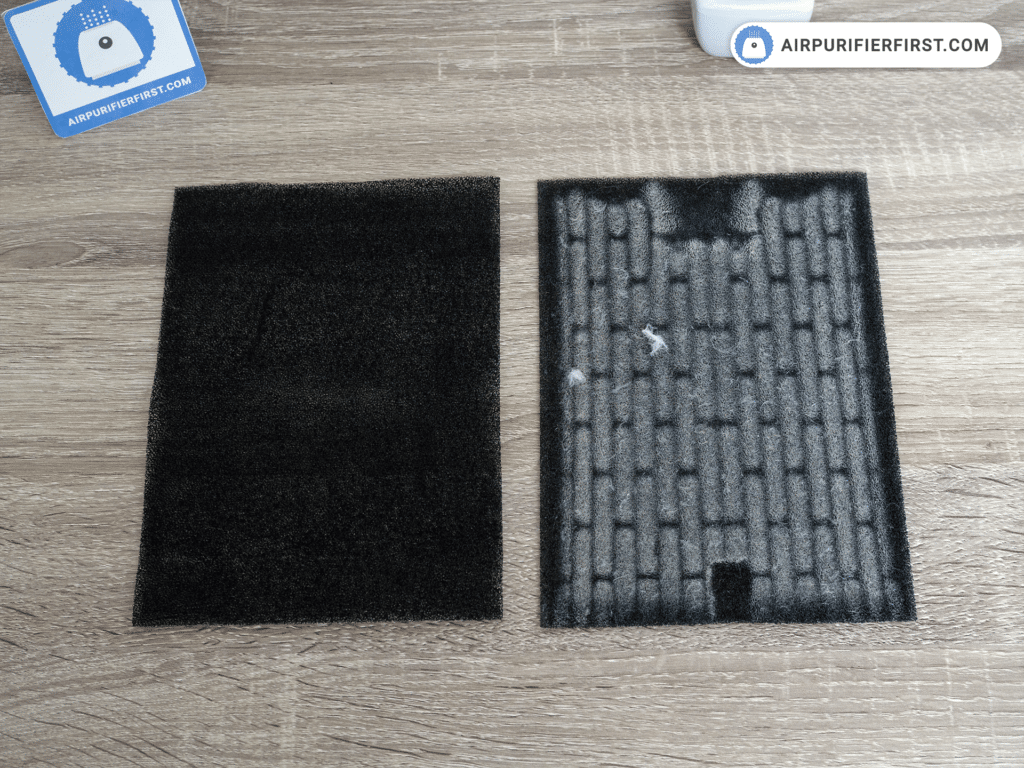
On some other air purifiers, which are somewhat weaker, a difference in air filtration was noticed, but not so significant and worth mentioning.
Therefore, my recommendation is not to remove the pre-filter from the device. In this way, you protect the primary filter (HEPA) from much more frequent replacement and improve air quality in certain situations.
What is an Air Purifier Pre-filter? – Video
Types of pre-filters that can be found in air purifiers
There are several different types of pre-filters. They differ in the structure of the material from which they are made and whether they are washable or not.
Below I will describe the different categories of pre-filters that you can most often see in air purifiers.
Washable Pre-filters
In my opinion, this type of pre-filter is the most practical. It is easiest to maintain and no less efficient than some other pre-filters. These filters rarely need to be changed by a new one.
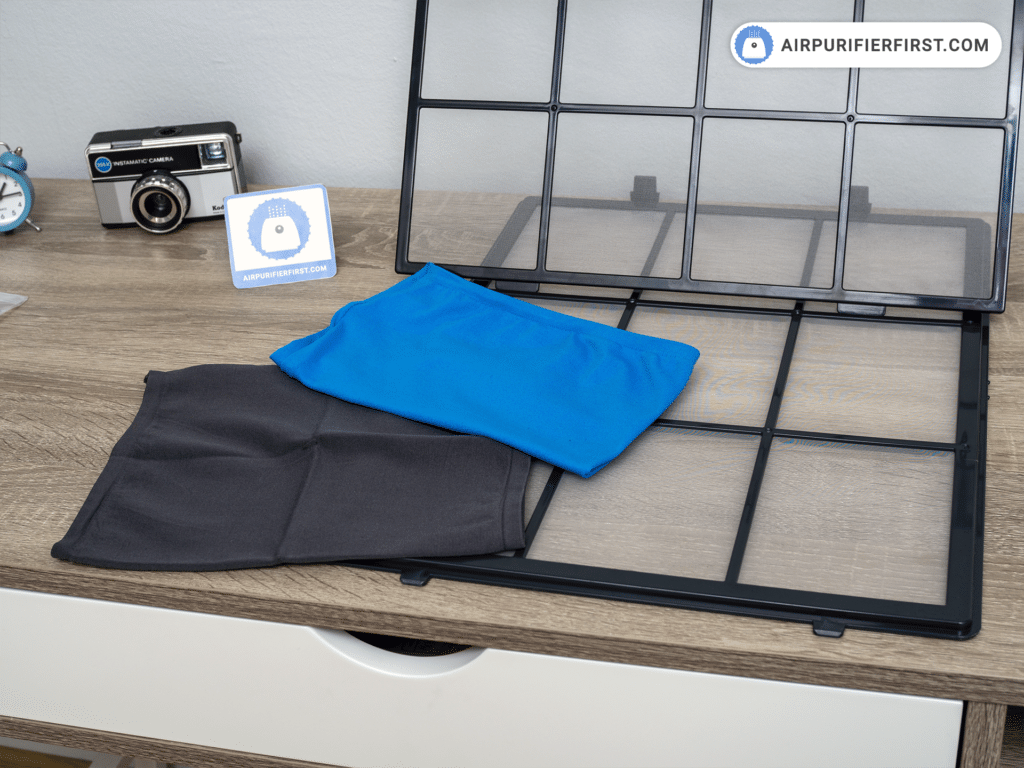
You can wash this type of pre-filter in the washing machine, on the sink, or just vacuum it with a vacuum cleaner; it all depends on the filter type.
With some air purifiers, you can find fabric-shaped pre-filters, which can be washed in the washing machine. In some others, it is a metal grille with tiny openings which you can wash on the sink or simply vacuum the dust with a vacuum cleaner.
Carbon Pre-filters or Pre-filters Coated with Carbon
This type of filter is also standard on the market. In my opinion, this is an ordinary filter coated with carbon. However, it has another purpose: to be a pre-filter because it is set as a first-stage filtration in front of the HEPA filter.
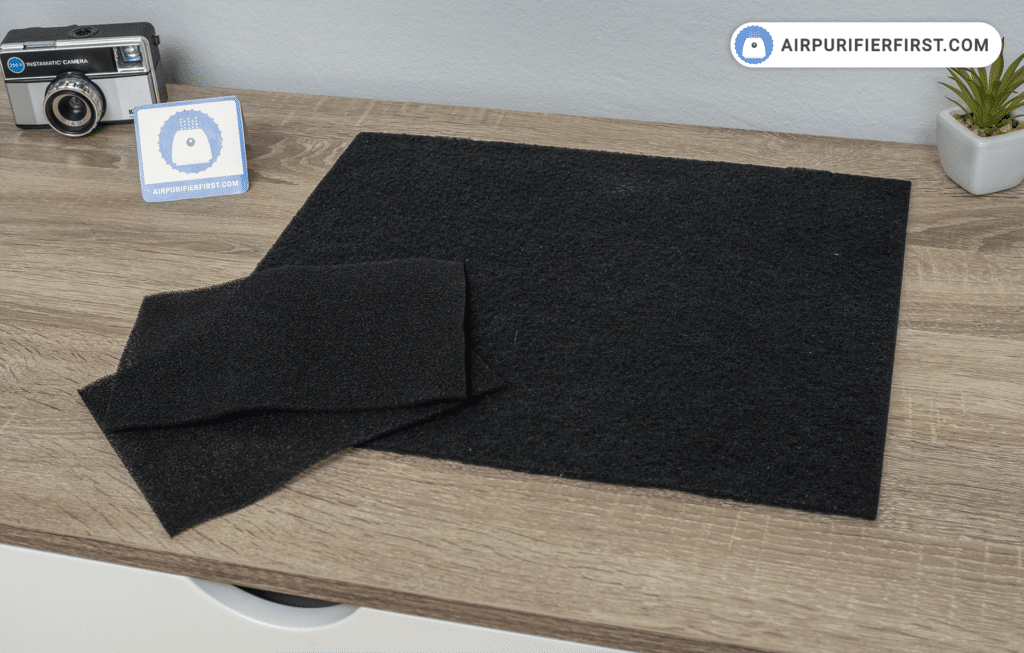
Whether this is a marketing ploy or whether it was really the manufacturer’s intention to make a pre-filter combination with a carbon filter, I am not sure. Still, I am sure that this pre-filter type also works very well and protects the HEPA filter.
I have to emphasize that this pre-filter option is the worst, in my opinion, primarily because this kind of filter is very easily damaged after a couple of vacuuming with a vacuum cleaner. Besides, it is not long-lasting and should be changed periodically.
This type of pre-filter should not be washed at all because carbon will lose its effect.
Nylon Fiber Pre-filter
This is a similar combination to the carbon pre-filters. The difference is that this filter is glued to another filter; most often, it is a HEPA filter.
The Nylon Fiber pre-filter has tiny openings, so it stops many particles and effectively preserves the HEPA filter.
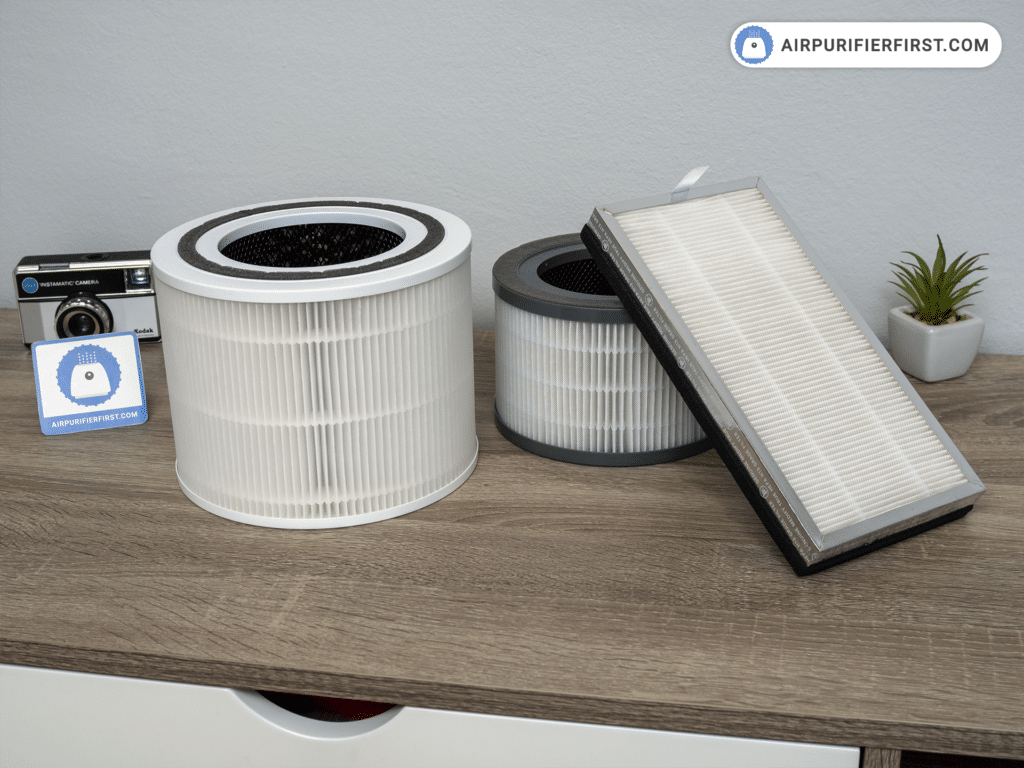
I like easy maintenance with this filter. All you have to do is vacuum the dust with a vacuum cleaner, and that’s it. Washing this pre-filter is not recommended, especially since it is often glued and combined with a HEPA filter. Very often, you will find this type of filter on devices that use circular 3-in-1 filters.
How and when to clean the pre-filter?
You will usually find this information directly in the user manual that came with the device. However, the cleaning time of the filter largely depends on the situation and the air purifier’s environment.
If, for example, you use the device in a room with pets, then the pre-filter should be checked more often, and therefore cleaned more often. Manufacturers generally recommend cleaning the pre-filter between 2-4 weeks.
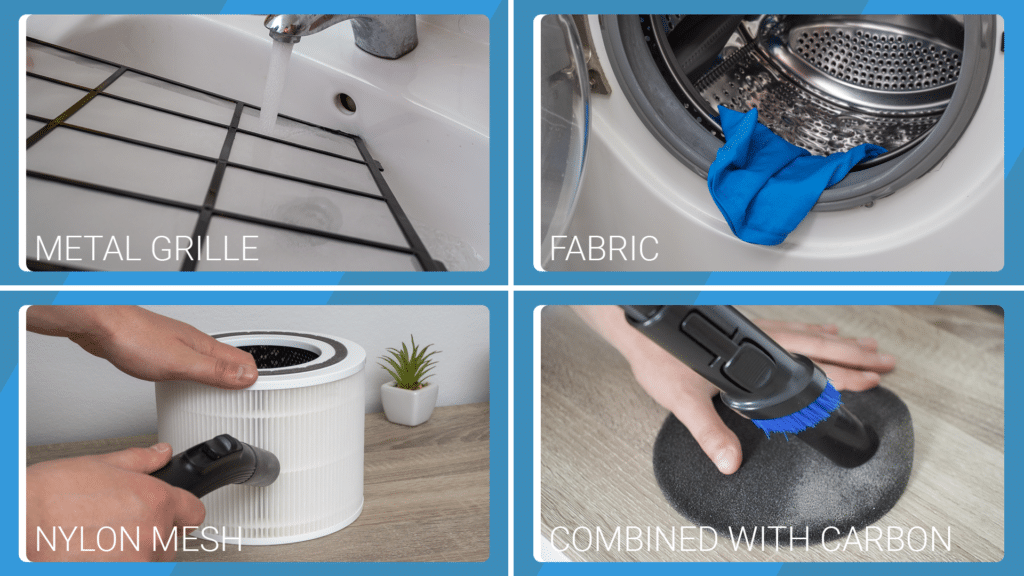
In my experience, if a smaller air purifier is built for rooms up to 200 sq. ft., I need to clean the filters within 2-4 weeks. However, if I use a more vigorous air purifier, and if it often runs at the highest speed, then dust sometimes accumulates even sooner, so I may clean the pre-filter once every two weeks.
I have noticed that in rooms where there are no pets and where they do not often stay, such as the bedroom, the pre-filter is very difficult to get dirty, so in these situations, you can clean the pre-filter once every two months.
Air purifier maintenance regarding pre-filters is not expensive and, most of the time, costs nothing. It will take some time for you because you need to use a vacuum cleaner or other ways to clean them.
Cleaning the pre-filter is not complicated.
If the pre-filter is in the form of a washable fabric, you can use a washing machine. If the filter is in the shape of a metal mesh with small holes, you can wash it in the sink. The combination of pre-filter with carbon filter and the combination of pre-filter with HEPA filter is best vacuumed or cleaned with a dry cloth.
FAQ
What is the use of pre-filter?
The primary purpose is to collect large dust particles, pet fur, and pollutants and preserve the HEPA filter and extend its lifespan.
Can you wash any pre-filter?
No, not at all. In particular, you must not wash pre-filters that are combined with a carbon or HEPA filter.
How long do the pre-filters last?
If the pre-filter is combined with a carbon or HEPA filter, it is entirely replaced with other filters. However, washable filters should rarely be changed, except when some significant physical damage occurs.
Is pre-filter necessary?
In my opinion, it is, primarily if you have pets. But even if you don’t have them, the pre-filter will definitely extend the life of the HEPA filter.
How often do you have to clean the pre-filter?
It is generally advised to clean the pre-filter on average between 2-4 weeks. It is optimal once a month. If you notice that the pre-filter gets dirty quickly, you can clean it more often. Or if it doesn’t get dirty much, it doesn’t need to be cleaned as often.
Final Thoughts
Although you may have been in doubt and ignored pre-filter when searching for an air purifier, I hope you now understand its importance and the fact that the pre-filter is intended not only to filter the air but also to extend the life of the primary filter (HEPA).
I advise you to clean and maintain the pre-filter as often as possible, as this will save the HEPA filter and reduce maintenance costs, as the HEPA filter is not cheap.
It would be good to pay attention to the pre-filter when buying an air purifier and all the other essential things. I believe that this will not be a problem for you after reading this article about pre-filters. In any case, for all questions, you can contact me by email, or you can leave a comment below the article.
Update Log
May 24, 2021 – I embedded the video explanation of what is a pre filter.
Very nice reviews and insights in air filtering technologies. Thank you very much for the effort and continuous updates. I am writing to you to talk about the filters order and their lifespan. My background is chemical engineering. First of all there is a debate about the filters order. The most correct way to place filters is mesh, hepa and then carbon. Why’s that? Activated carbon’s surface area will more drastically decrease with dust than the hepa and gases will not stick. So proper way is to filter all particles and then pass the gases through the carbon. I don’t know if this is counter intuitive. Another more interesting issue is the prefilter. Fine mesh vs more coarse like levoit’s. Fine mesh filters are used primarily to protect equipment, like the fine mesh filters found in cloth dryers in order to protect the motor. Both fine and coarse ones end up having the same performance if equipment protection is not vital. Why? Because the mesh doesn’t do the actual filtration! The mesh is there to build dust layers and these exact layers are the filter which makes it efficient. So another thing is mesh filter cleaning. HEPA will clog faster if the mesh filter is regularly cleaned since it will not filter as efficiently. Actually there are two factors to keep in mind here. Filtration efficiency curve and pressure drop through the filter. As time passes, prefilter’s efficiency curve is rising. Dust layers are accumulated on the filter and particles that would otherwise pass the mesh will not due to impacts with these layers and also electrostatic charges. On the other hand these layers will impact air filtration flow due to increased pressure drop. So the sweet spot of cleaning is not so regular but also not too late. I would like to hear your opinion on the above.
I agree! a video showing how to clean pre filters is also something I would like to see. Hence, this is very informative especially for those who owned one but doesn’t know how to clean it.
Wow, this is amazing! I sincerely hope you are going to make a video where you clean these pre-filters. 🙂
Thanks.
Will do that, definitely!